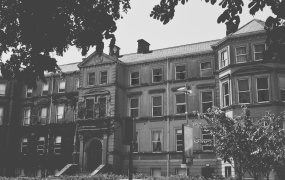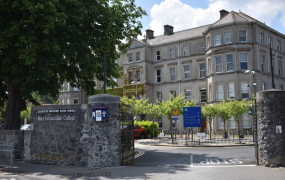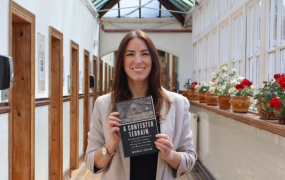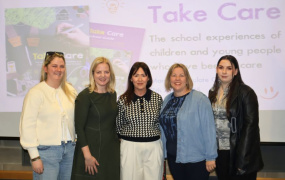Audio Research Centre
About
The Audio Research Centre (ARC) of Mary Immaculate College was established by the Media and Communications Studies Department as a hub for researchers, broadcasters, technologists and creative practitioners in the field of sound.
The college has a long established research centre which focuses on all things sonic: radio, music, soundscapes, sound art, film soundtracks etc.
ARC serves as a platform and resource for academics, postgraduate students and associates from other institutions who are involved in research into the following fields:
- Radio (terrestrial) at community, local, national and international levels; radio audiences; the listening process; radio and identity; radio documentary; radio drama; talk radio; public participation in talk radio; radio and the public sphere; radio and citizen journalism
- Streamed, digital and internet radio broadcasting
- Music of Film and Television; Film Sound- analysis and design; Soundscape - natural, urban and experimental
- Noise–aesthetics and politics
- Acoustic Ecology, Soundscapes architecture and design
- Developments in musical consumption, production and mediation; Interactive audio media; Recording, oral history and musical archives
- Sound, music, gaming and other cross-platform applications
- Popular Music–its production, mediation and audiences
ARC Members
| MIC Staff - Media & Communication Studies |
|---|
| Rosemary Day, Head of Department |
| Marcus Free, Lecturer |
| Tony Langlois, Lecturer |
| Kathy Cush, Lecturer |
| Research Associates |
|---|
| Jason Murphy,University of Sophia |
| John Walsh, Associate Professor, Dept of Irish, NUIG |
| Aileen Dillane, Lecturer in Music, Irish World Academy, University of Limerick |
| Karen Power |
| Harry Moore |
| Ciarán Ryan, DKIT (Dundalk Insitute of Technology) |
| Jude McInerney, PhD Candidate, MIC |
Projects
Phase Two: Research on use of the Irish language on Radio
Project Leads:
- Dr John Walsh, National University of Ireland
- Dr Rosemary Day, Mary Immaculate College
- Dr Philip Fogarty, National University of Ireland
This report presents the findings of the second phase of an ongoing study into the use of the Irish language on the country’s radio stations, other than those broadcasting exclusively in Irish. Under broadcasting legislation since 1988, all radio broadcasters are obliged to include the Irish language in their programming but there has been a lack of research on this issue until recently. The report presents data on the provision of Irish language programming by 57 stations in the first half of 2018 and makes a number of policy recommendations.
The principal authors can be contacted at John.Walsh@nuigalway.ie and Rosemary.Day@mic.ul.ie.
We acknowledge the financial support of Conradh na Gaeilge under their Bliain na Gaeilge initiative. This report also received financial support from the School of Languages, Literatures and Cultures, NUI Galway.
Sa tuarascáil seo, cuirtear torthaí i láthair ón dara céim de thionscadal taighde leanúnach faoi úsáid na Gaeilge ar stáisiúin raidió na tíre, seachas na cinn a chraolann go hiomlán i nGaeilge. Faoi reachtaíocht chraolacháin ó 1988 i leith, tá dualgas ar gach craoltóir raidió an Ghaeilge a chur san áireamh ina chuid cláracha ach go dtí le déanaí ní raibh aon taighde cuimsitheach á dhéanamh faoin gceist sin. Cuireann an tuarascáil seo sonraí i láthair faoi sholáthar cláracha Gaeilge ar 57 stáisiún sa chéad leath de 2018 agus déantar roinnt moltaí ó thaobh polasaí.
Gabhaimid buíochas le Conradh na Gaeilge a thug maoiniú dúinn mar chuid de Bhliain na Gaeilge. Fuarthas tacaíocht airgeadais chomh maith ó Scoil na dTeangacha, na Litríochtaí agus na gCultúr, OÉ Gaillimh.
You can download the report in English here. Leagan Gaeilge ar fáil anseo.
Download the full list of radio stations here.
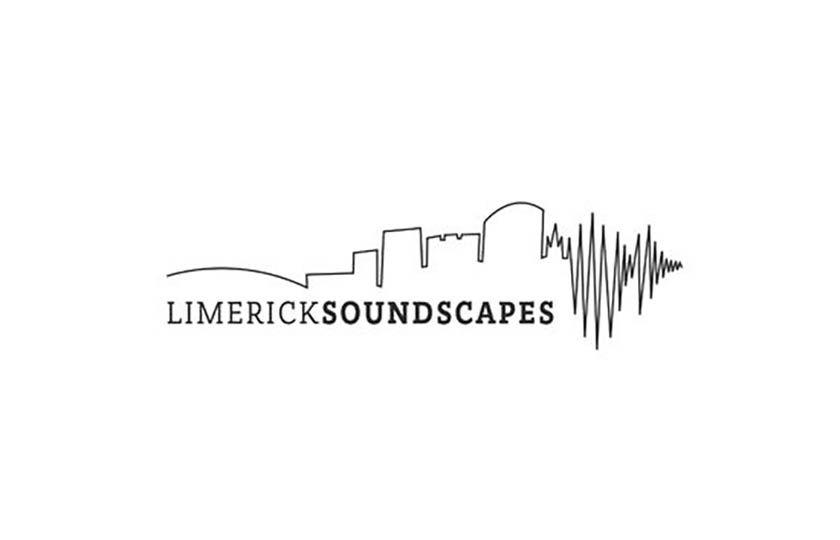
This exciting new project will develop a rich online archive of sound, music, speech and song from the City of Limerick. Contributions will be made by volunteer recordists from all walks of life in the city, capturing their sonic experience. Recordings will be eventually accessible through web media and phone apps, allowing listeners to explore a deep, interactive ‘soundmap’ of Limerick. It will of considerable value to educators, researchers, artists, tourists, and of course, the people of Limerick themselves.
A beta version of the soundmap, based on recordings made over summer 2013, is available here.
Snap is an Erasmus supported European project working to encourage the discussion around sexuality and intimacy for those aged 18 to 25. It does this by providing the tools required for workshops and the creation of radio and podcasts.
The Snap team is currently engaged in researching, creating workshops, literature, and consulting with relevant experts to provide the frameworks required to accommodate this.
Video produced by Snap - The Role of the Journalist.
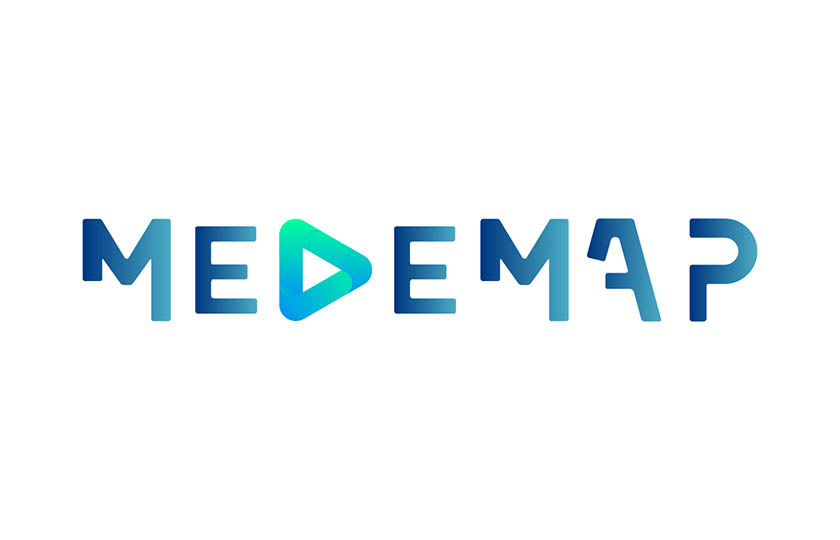
Mary Immaculate College is the Irish partner in a consortium of ten European universities that are investigating the role of the participation in the media in promoting and protecting democracy. This received funding of €3,000,000 from the EU HORIZON fund. The project is called MeDeMap and will take three years to complete. You can find out more about it and about the work Dr Rosemary Day is conducting as part of the project by visiting www.medemap.eu.
By Tony Langlois:
- Soundtrack to Hungry Hill, directed by Mieke Vanmechelen and Michael Holly (2022)
- Soundtrack to Gateway, directed by Niall Owens (2021)
- Soundtrack to Bó, directed by Mieke Vanmechelen (2019). Winner of Best of Kerry award in Kerry Film Festival 2020.
- Sound for Installation Residual Minority, directed by Mieke Vanmechelen (2020). Screened as an installation at SSA + VAS CutLog, Scottish Royal Academy Edinburgh and Home: Being and Belonging in Contemporary Ireland, the Glucksman Gallery, Cork, 2020.
Echo Locations
Echo Locations is an exhibition curated by Tony Langlois, presenting sounds and images submitted by contributors around the world in 2014. Its purpose is simply to demonstrate how interesting the sounds of everyday life are when time is taken to stop and listen to them.
Download a brochure that describes the locations and introduces the recordists behind the sounds.

Dreaming Trees
Dreaming Trees is a sound composition for outdoor Audio Visual Installation in Howard Davis Park, Jersey, Channel Islands in February 2023
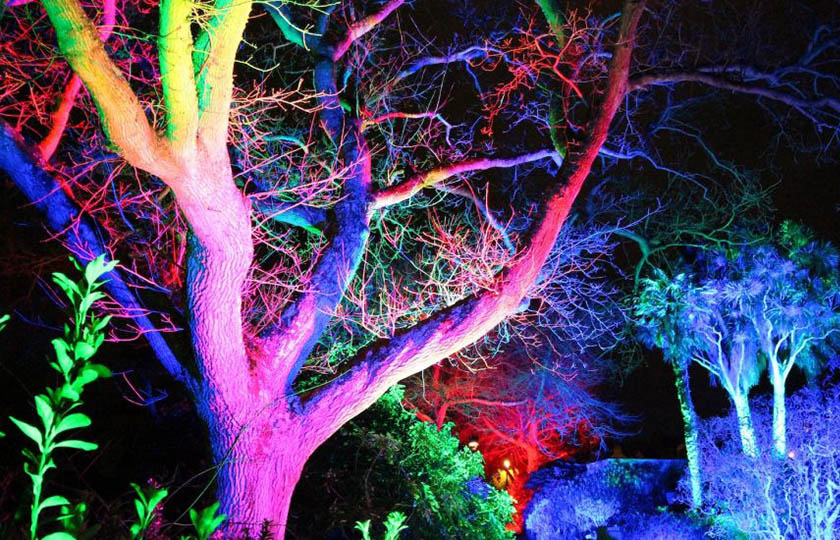
Publications & Conferences
- Aileen Dillane and Tony Langlois (2021) Sonic Mapping and Critical Citizenship: Reflections on Limerick Soundscapes in Transforming Ethnomusicology vol 2: Political, Social and Ecological Issues. Beverley Diamond and Salwa El-Shawan Castelo-Branco (eds). Oxford University Press. pp 96-114.
- Day, R. (2021) Shaping the vision for community radio in Ireland: Mollgaard, M. (ed) Radio at the Edges: Perspectives on Alternative, Community and Pirate Radio. Newcastle-Upon-Tyne: Cambridge Scholars Publishing (n.pag. awaiting hard copy).
- Day. R. (2021) Snapshot of Irish Radio 2021. Interactions: Studies in Communications and Culture. (In press).
- Day, R. and J. Walsh. (2021) New speakers’ on Irish language community radio: new understandings of linguistic variationon Raidió na Life. Journal of Multilingual and Multicultural Development. Taylor Francis. DOI: 10.1080/01434632.2021.1955893
- Day, R. and J. Walsh.(2020) Building a language community Through Radio in the age of social media: The case of Raidió na Life. Radio Journal: International Studies in Broadcast & Audio Media, 18(1), 79-94. DOI: click here.
- R. and J. Walsh (2019) Irish Language programming on public service, commercial and Community radio: Phase 2. Presented to Joint OireachtaCommittee for Irish language, Gaeltacht and the islands, with John Walsh an Phillip Fogarty, NUIG.
- Day, R. and J. Walsh (2018) Irish Language programming on public service, commercial and Community radio. Presented to Joint Oireachtas Committee for Irish language, Gaeltacht and the islands, with John Walsh, NUIG.
Talks
Disambiguation - An Introduction to Sound Art
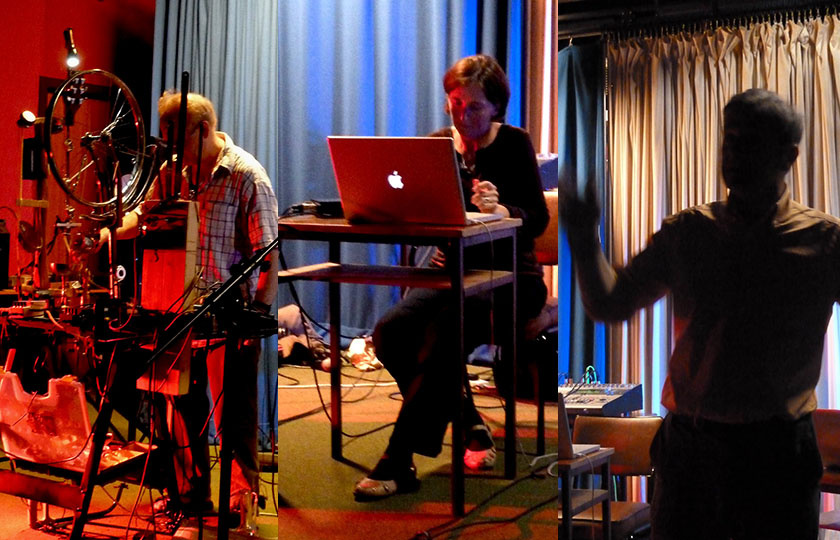
An occasional series of presentations, performances and discussions, aimed at introducing and de-mystifying a wide range of audio arts and associated theories. The informal approach encourages engagement, participation and (above all) questioning.
Disambiguation One took place on Monday 2 April 2012 in the AV studio at Mary Immaculate College. The audience listened to short talks and demonstrations by Tony Langlois (soundscapes), Harry Moore (found and adapted objects) and Karen Power (computer manipulation and improvisation).
The purpose of the evening, which was aimed at a small non-specialist audience, was simply to explain the basic concepts, historical context and technical practices of this area of rapid growth in the field of digital arts.
Karen Power
Karen Power is a well-received and stimulating Irish composer who has performed and collaborated all over the world. Every day environments and how we hear every day sounds lie at the core of her practice, and she delights in blurring the distinction between what most of us call 'music' and other 'sounds'. She has found inspiration in the natural world and has utilised our inherent familiarity with such sounds as a means of engaging with an audience. Resulting works challenge the listeners' memory of hearing while simultaneously presenting new contexts for such sounds.
www.karenpower.com
Harry Moore
Harry Moore is both a visual and sonic artist who teaches at St John's College, Cork. His celebrated 'pinhole' photographic works have been exhibited in Australia, China and the US, as well as all over Ireland. Always active in music and sound, Harry has developed a series of low-tech sonic devices from both found and familiar objects. His 'instruments', as well as his performances are improvised, surprising and exploratory, coaxing extraordinary epic sounds from a bricolage of semi-recognisable materials.
www.harrymoore.net
Tony Langlois
With a background as a ethnomusicologist, Tony's interests and creative work are concerned with the sounds of cultural and social environments. The manipulation, juxtaposition and transposition of field recordings draw attention to the musicality, subtlety and the strangeness, of the everyday.
www.tonylanglois.ie
Video documentation by Nicky Fennel.
Listening with AIRPI
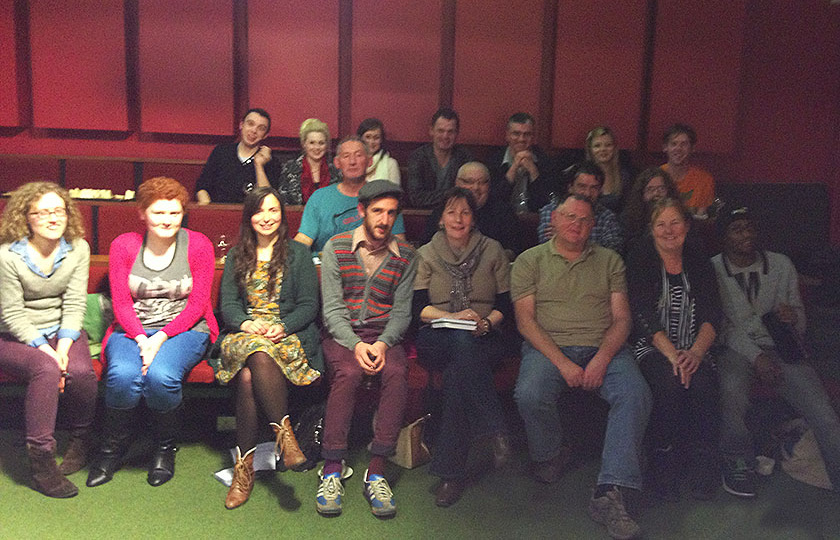
AIRPI, the Association of Independent Radio Producers of Ireland, in association with the Audio Research Centre at Mary Immaculate College, presented an evening of creative audio on 21 November 2012.
The AIRPI Listening Session featured AIRPI members (including award-winners) from the South West who presented some of their recent work. Organisers also encouraged all interested students and aspiring others to attend the event.
Links
- Archeophone Records
- Audioboo – Social Networking Radio
- Broadcasting Authority of Ireland
- CRAOL – Community Radio Network Forum for Ireland
- Creative Research Into Sound Arts Practice [CRISAP]
- Digital Media Arts Research Centre : University of Limerick
- Ear Room : Soundscape Site
- ECREA Radio Research Section
- Film Sound Hub
- Interference – Irish Sound Media Journal
- ISSTA: Irish Sound, Science and Technology Association
- MECCSA Radio Studies Network
- Radio Evolution Conference 2011
- Radio Waves – Irish Radio Site
- Rhizome: Technology and the Arts
- RTE Radio Archives
- School of Creative Arts, University of Ulster
- School of Sound (UK)
- Soma Internet Radio
- Sound and Music (UK)
- Sounds of Europe Project
- Third Coast Festival – Celebration of Audio Production
- UBU Archive
- World Forum for Acoustic Ecology
- World Soundscape Project
Archive
Irish Language Broadcasting - Phase One
Phase One: Survey of Irish Language Programming on Radio
Project Leads:
- Dr Rosemary Day, Mary Immaculate College
- Dr John Walsh, National University of Ireland, Galway
Phase One
This discussion paper presents the findings of the first phase of an ongoing study into the use of Irish language on the country’s radio stations, other than those that broadcast exclusively in Irish. Under broadcasting legislation since 1988, all radio broadcasters are obliged to include the Irish language in their programming but no detailed research has been conducted about this issue. The paper presents data on the provision of Irish language programming by 59 radio stations during 2017 and makes a number of policy recommendations.
The second stage of the research began in January 2018 and will comprise updated data about Irish language programming and interviews with station representatives. We thank Conradh na Gaeilge for their support under the Bliain na Gaeilge initiative for the second stage of the project.
Sa phlépháipéar seo, cuirtear torthaí i láthair ón gcéad chéim de thionscadal taighde faoi úsáid na Gaeilge ar stáisiúin raidió na tíre, seachas na stáisiúin a chraolann go hiomlán trí Ghaeilge. Faoi reachtaíocht chraolacháin ó 1988 i leith, tá dualgas ar gach craoltóir raidió an Ghaeilge a chur san áireamh ina gcuid cláracha ach níor deineadh aon taighde cuimsitheach faoi sin fós. Cuireann an páipéar seo sonraí i láthair faoi sholáthar cláracha Gaeilge ar 59 stáisiún le linn 2017 agus déantar roinnt moltaí ó thaobh polasaí.
Cuireadh tús leis an dara céim den taighde in Eanáir 2018 agus cuimseoidh sí eolas nuashonraithe faoi chláracha Gaeilge agus agallaimh le hionadaithe ó na stáisiúin. Gabhaimid buíochas le Conradh na Gaeilge as a dtacaíocht faoi Bhliain na Gaeilge don dara céim den tionscadal.
- Download the full report in English here and a summary in Irish here.
- Download the survey table for the research here.
- About
- Projects
- Publications & Conferences
- Talks
- Links
- Archive



